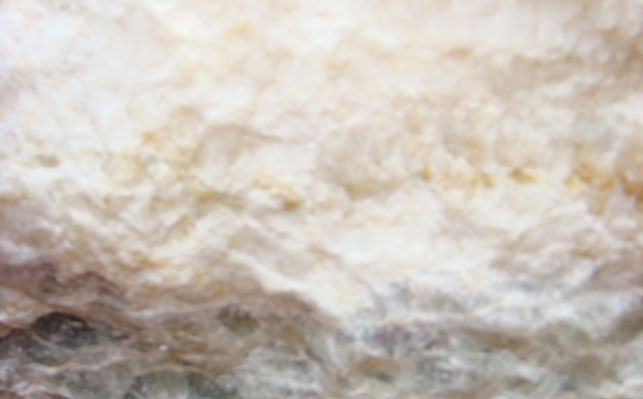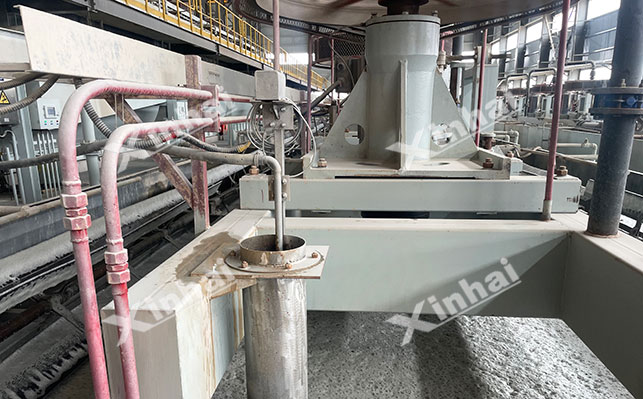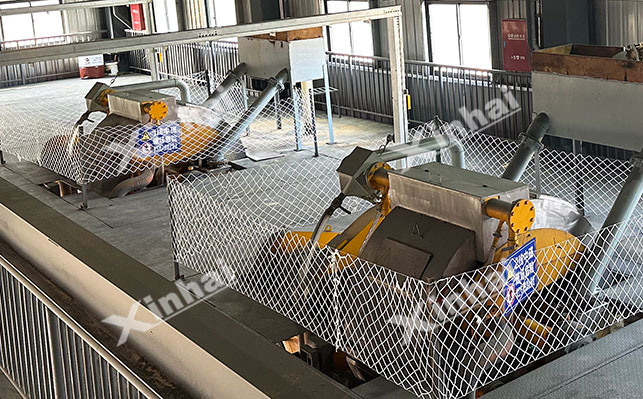
15311826613
Click to add WeChatAs a global strategic non-metallic mineral resource, fluorite is a key raw material in the fluorine chemical industry chain and plays an important role in metallurgy, building materials, new energy, semiconductors and other fields. . As a major fluorite resource country, my country ranks among the top in the world in terms of reserves and output, but a considerable proportion of it is phosphorus-containing fluorite ore. With the continuous improvement of the quality requirements of fluorite products in the industrial field, effective phosphorus removal is very necessary to expand the market application of phosphorus. Let's take a look at the ore characteristics of phosphorus-containing fluorite ore and the effective phosphorus removal method of fluorite ore!
In phosphorus-containing fluorite ore, phosphorus mainly exists in the form of apatite, and its distribution characteristics are diverse. Apatite often coexists closely with fluorite in fine and micro-granular form, and some particles are less than 0.02mm in size. This close symbiotic relationship makes it difficult for apatite to completely dissociate from fluorite during the grinding process, resulting in apatite easily entering the concentrate with fluorite in the subsequent beneficiation process, further increasing the difficulty of phosphorus removal.

On the other hand, in addition to apatite, adsorbed phosphorus is also common in phosphorus-containing fluorite ores. This type of phosphorus impurity adheres to the surface of fluorite and gangue minerals through physical or chemical adsorption. The formation reason is mainly related to the mineralization environment of the ore and the later geological action, such as the flow of groundwater that causes phosphorus ions to deposit and adsorb on the surface of the mineral. During the beneficiation process, adsorbed phosphorus is easy to enter the concentrate with the target mineral, and because of its dispersed distribution and weak binding force, it is difficult to effectively remove it by conventional beneficiation methods, further increasing the difficulty of removing phosphorus impurities.
In the field of steel smelting, when fluorite is used as a flux, the phosphorus content must be strictly controlled below 0.1%. High-phosphorus fluorite will cause excessive phosphorus in molten steel, increase the cold brittleness of steel, and seriously affect product quality. In the fluorine chemical industry, phosphorus impurities will accelerate the corrosion of equipment during the production of hydrofluoric acid, and affect the purity and performance stability of downstream products such as refrigerants and fluorine-containing polymers.
The price of low-phosphorus (P₂O₅<0.05%) high-quality fluorite concentrate is 30%-50% higher than that of ordinary phosphorus-containing fluorite. With the surge in demand for high-purity fluorite in emerging industries such as new energy and semiconductors, reducing the phosphorus content can not only meet the needs of the high-end market, but also help to enhance the competitiveness of my country's fluorite products in the international industrial chain.
At present, common fluorite ore phosphorus removal methods include flotation, magnetic separation, chemical leaching, etc. Each method has its unique advantages, applicable phosphorus ore types and processing range.

Positive flotation phosphorus removal: Based on the difference in surface properties between apatite and fluorite, fatty acid collectors (such as sodium oleate) are used to preferentially capture phosphorus minerals, thereby separating phosphorus from fluorite. In a weakly alkaline pulp environment, the collector molecules react chemically with the metal ions on the surface of apatite to form a hydrophobic film, which causes apatite to attach to the bubbles and float to the surface of the pulp. It is mostly suitable for fluorite ores with a phosphorus content of less than 0.5% and a relatively coarse apatite particle size (greater than 0.02mm). Generally, the phosphorus content in fluorite concentrate can be reduced from the initial 0.3%-0.5% to about 0.1%-0.2%.
Reverse flotation phosphorus removal: With the inhibition of fluorite and the flotation of phosphorus minerals as the key points, inhibitors such as sodium fluorosilicate are used to inhibit the surface activity of fluorite, and then amine collectors (such as dodecylamine) are used to enrich apatite. In the ore pulp, the inhibitor forms a hydrophilic film on the surface of fluorite, preventing the collector from adsorbing, while the collector selectively adsorbs on the surface of apatite, making it hydrophobic and floating. It is mostly suitable for treating fluorite with a phosphorus content of 0.5%-1.5%, especially ores with fine apatite interpenetration. However, this method is sensitive to ore slime and needs to be combined with an efficient desliming pretreatment process.
Combined flotation process: Combining the advantages of positive and reverse flotation, most of the phosphorus is first removed by positive flotation, and the low phosphorus content is further purified by reverse flotation to achieve deep removal of phosphorus impurities. It can adapt to fluorite ores with various phosphorus contents and different interpenetration particle sizes, especially ores with high phosphorus content and complex interpenetration particle sizes. It has a wide range of treatment and can reduce the phosphorus content of fluorite concentrate to below 0.05%.
Magnetic separation and phosphorus removal is based on the difference in the magnetic properties of phosphate minerals and fluorite. The magnetic field generated by the magnetic separation equipment is used to capture magnetic phosphate minerals (such as ilmenite apatite). When phosphorus-containing fluorite passes through the magnetic field, the magnetic phosphorus minerals are adsorbed on the magnetic poles of the magnetic separation equipment under the action of the magnetic field force, while non-magnetic minerals such as fluorite flow away with the slurry, thereby achieving separation.
This method is mostly suitable for treating magnetic phosphorus minerals. Generally, in the fluorite phosphorus removal process, it is often used as a pretreatment or concentration link in conjunction with flotation, which can reduce the subsequent flotation agent consumption and reduce production costs.

Chemical leaching phosphorus removal is to use acid or alkaline chemical reagents to react with phosphorus minerals to dissolve phosphorus minerals to form soluble phosphates, and then remove phosphorus impurities by solid-liquid separation. In an acidic system, apatite reacts with acid to generate soluble phosphates and water; in an alkaline system, phosphorus minerals react with alkali to generate soluble phosphates and corresponding metal salts.
This method is suitable for treating phosphorus-containing fluorite ores of various embedded particle sizes, especially for fine-grained ores that are difficult to treat with conventional mineral processing methods, and can effectively enrich fluorite for phosphorus removal. However, this method has high requirements for equipment corrosion resistance, high production costs, and will produce a large amount of wastewater.
The above is an introduction to the characteristics of phosphorus-containing fluorite ore and the methods of fluorite beneficiation and phosphorus removal. In addition to the above conventional methods, there are also some new technologies such as biological beneficiation and electrostatic separation technology. In actual beneficiation plants, how to effectively select suitable fluorite phosphorus removal technology depends on the properties of fluorite ore and phosphorus content. Usually, it is necessary to conduct beneficiation tests first. Through experimental analysis, the key to obtaining an ideal recovery rate is to reasonably design a suitable beneficiation process plan.